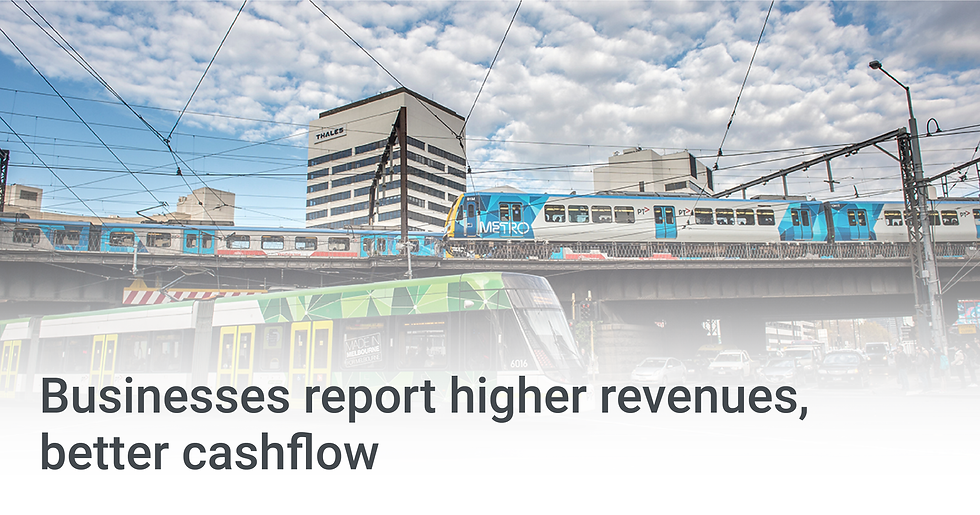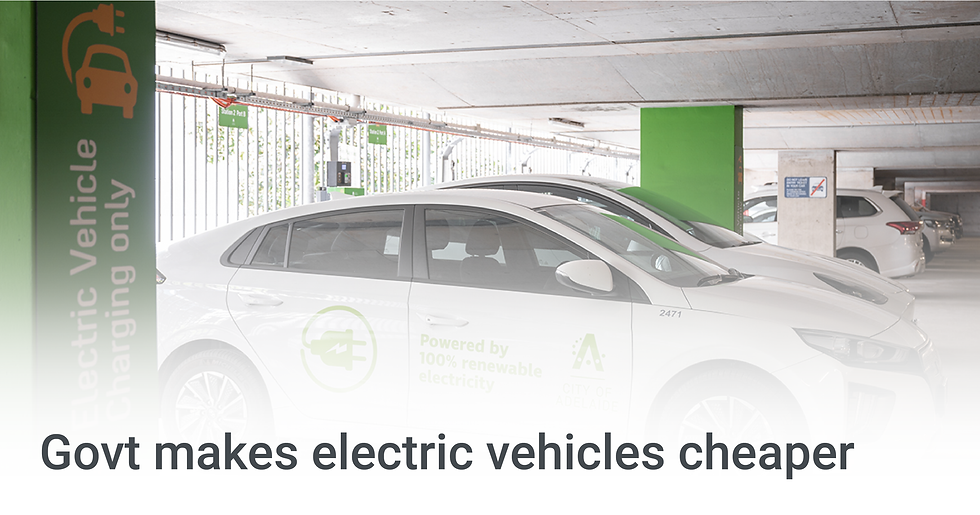Business Finance Update - Dec 22
- Skyward Financial

- Dec 17, 2022
- 5 min read
2022 is almost over. For some businesses that might be a relief, for others it might be the busiest time of year. Either way there is a sense of eager anticipation as we head into 2023, the problem is next year is going to be tumultuous.
Major headwinds will prevail over the global economy in 2023 which will lead to a global recession starting next year.
For Australia, our downturn will be lead by the collapse in consumer spending which will precipitate a spike in insolvencies and unemployment, and a sharp decline in business income.
2023 and 2024 will be rocky.
In another recent newsletter I wrote about how one persons spending is another persons income. Consumer spending is business income. Lower business income leads to lower employment and economic activity, ergo lower GDP means a technical recession.
After this YOLO Christmas the new reality of higher mortgage repayments, rent, food, travel and everything else will set in to peoples minds as they see their spare cash disappear.
The cash they would have spent on discretionary items will suddenly need to be used for essential living costs and that will have a severe mental weight on people as they realise how much poorer they are.
Poorer of course from the changing cost of money, largely stemming from the RBA and the cash rate.
It is of course exactly what the RBA wants.
They want to crush your spending, your "demand" as economists will label it, so that inflation reduces.
Invertedly though they are also leading the country into the largest property price correction ever, as we will likely see over a 20% national property price decline. That is roughly $1.4 Trillion in value destruction on residential property (from a covid market peak of around $9 Trillion (with a T)).
The wealth destruction will be another key factor destroying consumer spending, and subsequently business income, forcing businesses to let go of staff, cut costs, increase their prices and become fierce in protecting their cash flows.
On top of all of that, it is very likely the US will enter a recession next year as well, I believe they have been in one essentially since 2020 but the numbers do not tell the story. Europe is also suffering, especially with their energy crisis, and will see a severe economic contraction.
Global stocks have lower to go as investors realise the value of the future cash flows generated from the businesses are not as resilient or certain as they once were.
And much of this is driven by the US central bank where the ‘risk free’ rate will be at its peak since the GFC in 2008 which means cash returns a few percent to investors, so any business that wants investors money will need to deliver returns well above that, which are also risk adjusted.
None of this helps the global economy, the Australian economy or businesses.
In spite of all of this I remain optimistic for the medium and long term future of Australian businesses.
The storm will come and pass, capitalist economies through the beautiful process of creative destruction will see the best and brightest businesses continue to grow and be given more opportunities, while misallocated capital is burned and wasted energy repurposed into more productive endeavours. The next couple of years will be tough, but the future remains as bright as ever.
******
Here are four interesting business and finance stories for you as we wind down for the year. I hope you have a nice break and that your business has a big 2023.
SMEs in good shape
New Census insights
Building boom explained
Govt makes EVs cheaper
Read more below

For now..... Unfortunately business revenues and cash flows are set to become a major concern for many businesses. The cost of doing business, from wages, to energy, to rent, to materials, is going up. And many customers are not paying on time, as they have their own issues. This is creating a huge cash flow gap for many businesses. Fortunately there are a range of working capital solutions available for businesses and Skyward works with over 40 lenders to find the right one. Want to expand? Call me for a loan

Newly-released data from the 2021 Census has revealed some profound changes over the past four decades to the way in which Australians work. Between 1971 and 2021, the share of working-age Australians (i.e. those aged 15 years and over) working 40 hours or more per week fell from 74.6% to 38.2%. Partly, this was because the official working week was cut from 40 to 38 hours in 1986.

The four decades to 2021 also saw a significant decrease in the share of men who were employed (from 79.8% to 65.0%) and a significant increase in the share of women who were employed (from 36.8% to 58.3%). At the same time, there was a massive reduction in the share of men aged 75 and over who were still in the workforce – from 8.9% to 0.6%. One thing that didn’t really change during those four decades was the share of workers who were self-employed, which increased marginally, from 12.5% to 13.8%.

Australia is experiencing unprecedented commercial construction activity across all sectors and states, according to Rider Levett Bucknall’s third-quarter construction report.
The amount of construction work underway across Australia during Q3 was at a “record high”, with “similar levels of activity” forecast for the next two to three years.
RLB said this building boom was being driven by:
Federal and state government funding of major projects
Projects starting late due to covid lockdowns
Projects falling behind schedule on the east coast due to labour shortages and abnormal weather conditions
At the same time, construction costs have been rising at a rate not seen since 1986. However, RLB expects that price pressures will decline in 2023, due to reduced economic output in the world’s major economies. “This easing of demand should allow manufacturing and logistics to get back to ‘normality’. The easing of demand should also see a softening of material prices with the high levels of demand-led price premiums reducing due to lessening demand,” RLB said. I can help you get a construction loan

The federal government has made electric vehicles more affordable after passing the Electric Car Discount Bill through parliament The bill removes the 5% import tariff for zero- and low-emission vehicles that are beneath the Luxury Car Tax Threshold ($84,916). The bill also provides a fringe benefits tax (FBT) exemption for eligible cars made available for employees by employers. For a vehicle valued at about $50,000, it means a $9,000 benefit to an employer or a $4,700 benefit to an employee using a salary sacrificing arrangement, according to government calculations. The government will apply the FBT exemption retrospectively to eligible vehicles first used on or after 1 July 2022. Eligible plug‑in hybrid electric vehicles will also be FBT-exempt when provided under arrangements entered into before 1 April 2025. Treasurer Jim Chalmers said the Electric Car Discount Bill would make EVs cheaper. “More Australians will be able to get behind the wheel of an electric car thanks to these changes, which will reduce up‑front and ongoing costs,” he said. Contact me if you need a company EV



Comments